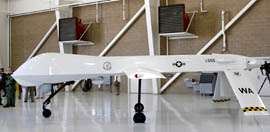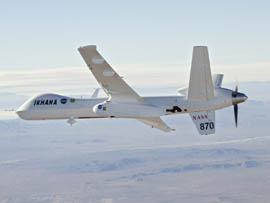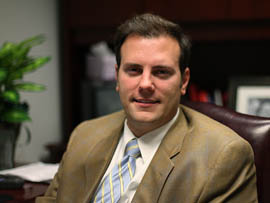Cronkite News has moved to a new home at cronkitenews.azpbs.org. Use this site to search archives from 2011 to May 2015. You can search the new site for current stories.
Supporters position Arizona for unmanned aircraft test range bid
PHOENIX – Arizona’s topography, climate and history of military contracts position it as a good place to test the emerging technology of unmanned aircraft, a state lawmaker says.
“Arizona is prime – it is the perfect place to test unmanned aircraft, it is the perfect place to move that technology forward,” said Rep. Tom Forese, R-Gilbert.
This legislative session, Forese championed a successful resolution, HCR 2024, that encourages Arizona to compete to host one of the test ranges to be established by the Federal Aviation Administration.
Under the National Defense Authorization Act of 2012 and the FAA Modernization and Reform Act of 2011, the FAA must develop standard operating and safety procedures for unmanned aircraft to share the skies with manned planes by 2015. To do this, the agency will identify six U.S. locations, such as an airport or military base.
Forese said his resolution was intended to educate lawmakers and leaders about this opportunity.
“What really needs to be done is to get leadership all on the same page to make sure everybody understands the issue and that’s the purpose of this resolution,” he said.
The Arizona Commerce Authority is spearheading a state effort to secure a testing location.
Retired Air Force Gen. John Regni, engaged by the agency as a technical consultant, noted that unmanned aircraft already are being tested at Arizona bases through military contracts.
“This is big for the state of Arizona because there’s so much that is happening already in the military environment,” Regni said. “And in the defense contractor world, there’s a lot of unmanned systems that are already working here.”
The FAA is seeking public suggestions through May 8 for testing facility requirements. The comment period will help the FAA decide what characteristics should be required of testing ranges, Regni said.
“What types of climate the ranges need to be in, elevations, obviously good operating weather, also bad operating weather and how much air space the range would physically need to do this safely,” he said.
The FAA will then review suggestions establish testing facility requirements. Public and private organizations may then submit applications that detail how they best fit the official requirements.
Bringing the testing to Arizona would equate to many high-paying jobs, Forese said.
“I think we owe it to the people of the state of Arizona to make a best effort,” he said.









